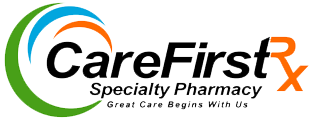Trilostane
Cushing’s Disease and Compounded Trilostane
Dogs can suffer from endocrine (hormonal) diseases much like people. Cushing’s disease (hyperadrenocorticism or HAC) is an endocrine disorder, in which dogs produce too much cortisol hormone. 80% of dogs with Cushing’s disease have the pituitary-dependent form, while the remaining are affected by an adrenal gland tumor.
Cushing’s disease affects the multiple functions throughout the dog’s entire body.
The most common signs include:
- - Thinning hair coat
- - Excessive panting
- - Weight gain
- - “Pot-bellied” appearance
- - Excessive water consumption
- - Excessive urination
- - Skin infections
- - Urinary tract infections
Veterinarians are able to diagnose Cushing’s disease by running specific blood tests. If your dog has been diagnosed with Cushing’s disease, you may be concerned about which medication your dog will take.
Cushing’s disease is commonly treated by a drug called Trilostane. It is mostly used to treat pituitary-dependent HAC but it can be used to manage the signs of an adrenal tumor.
Trilostane helps to decrease the uncomfortable symptoms of Cushing’s disease – panting, weight gain, pot-bellied appearance, hair loss, etc. It works to decrease the amount of cortisol made by the adrenal glands.
Side effects can occur while your dog is taking Trilostane. The most common include:
- - Vomiting
- - Diarrhea
- - Lethargy
- - Weakness
- - Iatrogenic hypoadrenocorticism
If your dog experiences side effects, especially within the first few days, contact your veterinarian immediately. The dose may need to be adjusted or other monitoring completed.
Trilostane - Monitoring Information You Need to Know
It is very important that you follow your veterinarian’s instructions for bloodwork monitoring after starting Trilostane.
This often means blood tests and a physical exam 10-14 days after the start of the medication.
‘ACTH Stim’ testing is the most common test used to monitor Trilostane efficacy. Once the optimal dose has been reached for your dog, additional monitoring is often required at 30 days, 90 days and every 3 months after.
Pay close attention to the timing your veterinarian requests on the day of the ACTH Stim test. Trilostane is given once a day with food. Most testing must occur 4-6 hours after Trilostane is given. Due to this requirement, veterinarians recommend giving the medication in the mornings.
Turn your dog’s “Treatment” into a “Tasty Treat”!
Some dogs experience less digestive upset when compounded chewable Trilostane is given instead of capsules. CareFirst Specialty Pharmacy is able to provide tasty chewable Trilostane tablets and flavored liquids in the dose that your dog needs. Popular flavors include beef and poultry. Let us help you turn “treatment” into simply a “treat” for your furry friend.
If your dog is experiencing digestive upset while taking Trilostane, speak to your veterinarian about switching to our compounded products.
** Iatrogenic hypoadrenocorticism is also known as Addison’s disease. It is a rare side effect of Trilostane. To learn more about this side effect, please contact your dog’s veterinarian.
References
1. Tilley, Larry P. and Smith, Francis W.K. Blackwell’s Five-Minute Veterinary Consult: Canine and Feline. Fourth Edition. Hyperadrenocorticism. p. 646-649.
2. Plumb, Donald C. Plumb’s Veterinary Drug Handbook. Eighth Edition. Trilostane. p. 1448-1452.


Comments